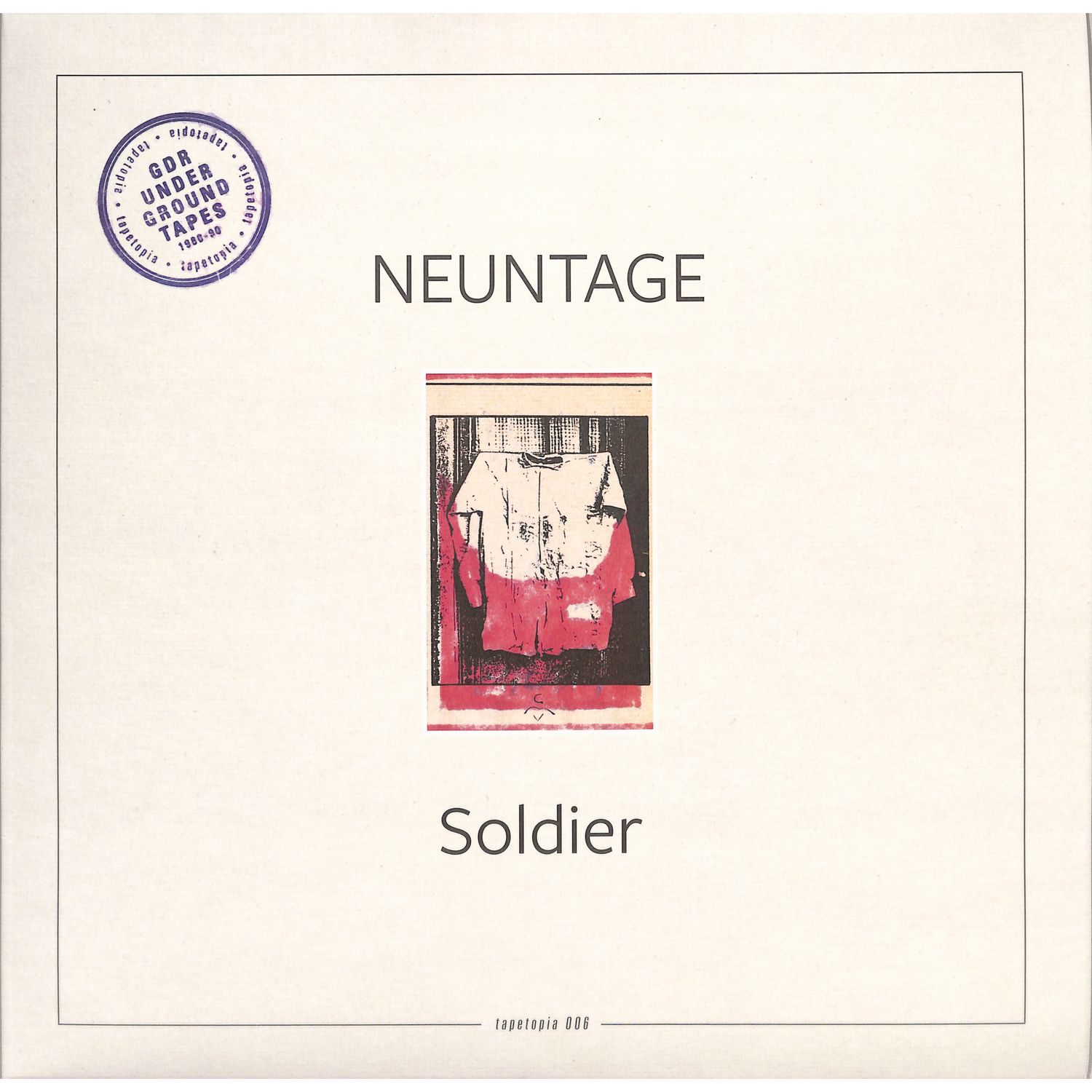Neuntage
SOLDIER
(LP)
12 Inch

In der zweiten Hälfte der 80er Jahre, 1983, wehten aus dem DDR-Punk-Underground etwas gedämpftere Töne. Um fünf vor zwölf schlug es immer wieder Mitternacht und die eine oder andere Punkband mischte ihrem Aggressionspotential ein wenig Laudanum bei. Derartige Vorboten gingen einer dunklen Welle voraus, deren schaumiger Scheitel sich an Nebelwänden aus Trockeneis brechen würde. Vor allem in Leipzig und Ost-Berlin brachte ein kettenrasselnder Zeitgeist Bands hervor, die aus einem dunklen Brunnen schöpften. Viele dieser Bands entstanden aus der noch heißen oder schon kalten Asche des Punks. Die beiden Gründungsväter von Neuntage Alt, René Glofke und Taymur Streng (Spitzname Strangler), kannten sich aus der Ostberliner Punkszene.
Sales Information:
tapetopia 006 In 1983, some more subdued sounds began to waft from the GDR punk underground into the second half of the 80s. At five to the end of time, it was perpetually striking midnight and the occasional punk band would mix a little laudanum into their potential for aggression. Portents in this vein preceded a dark wave whose foamy crest would break on fog walls of dry ice. Especially in Leipzig and East Berlin, a chain-rattling zeitgeist produced bands that drew from a dark well. Many of these bands arose from the still hot or already cold ashes of punk. The two founding fathers of Neuntage Alt, René Glofke and Taymur Streng (nicknamed Strangler), knew each other from the East Berlin punk scene. The third man aboard, Mike Sauer, played drums in the early 1980s for Sendeschluß, a punk band that, lost in thought somewhere in the no-mans land between punk and post-punk, faded away in 1984. Punk was no longer the order of the day, but it was a form of expression among many and easy to combine. Glofke and Streng found common ground in experimental set-ups with such otherworldly names as Medusa Brahma or Die zeitweilige Erscheinung.
From this far-flung point of departure, a short tunnel led straight into the black light of Neuntage Alt, the coldest star in the low-hanging sky above East Berlin. Neuntage Alt appeared at the end of 1986, during the last blackout phase of the GDR, on the threshold between the underground and the so-called other bands a scene that used the non-socio-critical approach of German Wutwave (anger wave) in order to be allowed to perform publicly. In the context of this scene, Neuntage Alt did not belong to the inner circle. Moreover, the bands subcultural base was initially in Mahlsdorf, on the south-eastern edge of East Berlin. This was where the DIY sound studio of amplitude apostle and great modulator Taymur Streng was situated. Strangler held the position of house electrician and keyboard god in various projects. One of them had the bland alias Mahlsdorfer Wohnstuben Orchester, behind which the avant-garde court chapel of the bungalow studio was concealed. There Taymur also conspired with the East Berlin underground band Ornament & Verbrechen (tapetopia #001). Ronald Lippok of Ornament & Verbrechen remembers how once, at the opening of a joint session, he and his brother Robert attended Taymurs engaging slide show of his collection of test patterns. Afterwards, they created a piece with the psychedelic title Das sentimentale UfO, which sheds an iridescent light on the bizarre atmosphere in the studio. Taymurs obsession with technology was legendary. The home studio was also his living space; a circuit, a machine park of screwed and soldered equipment, a single keyboard orgy. His own creations were also based on circuit diagrams found in the radio amateur magazine Funkamateur. Its somewhat clueless subtitle Praktische Elektronik Für Alle (Practical Electronics for All)[info sheet from distr.]